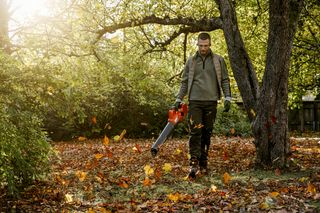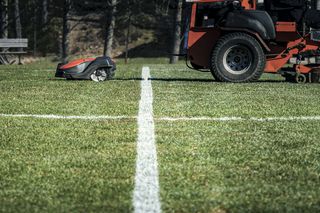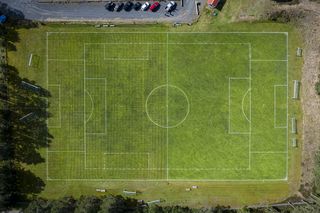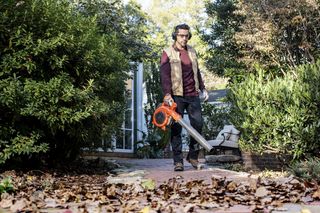
9 simple tips for your fall lawn care
Welcome autumnal weather to your property with these easy-to-follow tips for your fall lawn care.
1. Clean up the leaves
Nothing says "autumn" like a big pile of leaves in your yard! Use a backpack or handheld leaf blower to collect all the fallen leaves in one spot for fast and easy pickup. Alternately, you can invest in a bagger attachment for your lawn tractor or zero-turn mower, making the job as easy as a few rides around the yard.
2. Don't forget the sticks
Don’t let tree debris make your hard-won grass turn yellow! Pick up any sticks and branches that come down with the leaves. Letting these sit on your turf during the winter months could kill your grass.
3. Make the final mow
For the final grass cutting of the season, raise your mower’s cutting height slightly. You don’t want to cut the grass too low right before the grass stops growing. Plus, you'll want your front yard landscaping to look good in the months to come!
4. Dethatch the lawn as needed
Having a well-established lawn is certainly a good thing. The more consecutive seasons your lawn is healthy, the deeper and stronger its roots will be. However, over time, a layer of dead grass, roots and debris will often accumulate between the soil surface and the green grass blades above. This layer is called thatch, and it’s important to remove or break up thatch to ensure your lawn stays healthy. Dethatching can be performed with a special rake or by investing in a gas-powered dethatcher.
5. Aerate as needed
If you didn’t aerate your lawn in the spring, do so now using an aerator. Aerating punches holes in the ground to add oxygen and nutrients to the soil, while providing a space for seeds to germinate.
6. Overseed if you haven't already
You typically only need to overseed your lawn once per year. You may opt to overseed bare areas, too. Either way, make sure you’re at least one month out from the first frost to avoid damaging new seeds.
7. Apply your fall lawn fertilizer and winter fertilizer
If you’re overseeding, apply a lower-nitrogen starter fertilizer to give your new grass a jump start. Otherwise, apply a light dressing of lawn fertilizer once in early fall and once in late fall. This latter application is sometimes referred to as "winter fertilizer" or "winterizing a lawn."
8. Spray perennial weeds
Early fall is a good time to kill remaining weeds before they go dormant for the winter. But be careful about applying any herbicides to your lawn if you’ve recently planted new grass seed – always read the labels of your particular product. Many lawn weed control products will interfere with new seed germination. Also, avoid getting herbicide on any landscaping plants.
9. Bring Automower® indoors
If you live in an area where you’re expecting snow and frost during the winter, bring your Automower® robotic mower indoors. Even if you’re not expecting a harsh winter, it’s a good idea to bring Automower® inside for the colder months. After all, even robots deserve a vacation!









